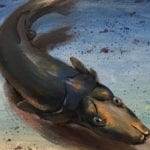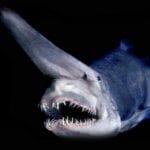 Technology
Technology  Technology
Technology  Humans
Humans 10 Everyday Human Behaviors That Are Actually Survival Instincts
 Animals
Animals 10 Animals That Humiliated and Harmed Historical Leaders
 History
History 10 Most Influential Protests in Modern History
 Creepy
Creepy 10 More Representations of Death from Myth, Legend, and Folktale
 Technology
Technology 10 Scientific Breakthroughs of 2025 That’ll Change Everything
 Our World
Our World 10 Ways Icelandic Culture Makes Other Countries Look Boring
 Misconceptions
Misconceptions 10 Common Misconceptions About the Victorian Era
 Mysteries
Mysteries 10 Strange Unexplained Mysteries of 2025
 Miscellaneous
Miscellaneous 10 of History’s Most Bell-Ringing Finishing Moves
 Technology
Technology Top 10 Everyday Tech Buzzwords That Hide a Darker Past
 Humans
Humans 10 Everyday Human Behaviors That Are Actually Survival Instincts
 Animals
Animals 10 Animals That Humiliated and Harmed Historical Leaders
Who's Behind Listverse?

Jamie Frater
Head Editor
Jamie founded Listverse due to an insatiable desire to share fascinating, obscure, and bizarre facts. He has been a guest speaker on numerous national radio and television stations and is a five time published author.
More About Us History
History 10 Most Influential Protests in Modern History
 Creepy
Creepy 10 More Representations of Death from Myth, Legend, and Folktale
 Technology
Technology 10 Scientific Breakthroughs of 2025 That’ll Change Everything
 Our World
Our World 10 Ways Icelandic Culture Makes Other Countries Look Boring
 Misconceptions
Misconceptions 10 Common Misconceptions About the Victorian Era
 Mysteries
Mysteries 10 Strange Unexplained Mysteries of 2025
 Miscellaneous
Miscellaneous 10 of History’s Most Bell-Ringing Finishing Moves
8 Endangered Species Still Hunted
Hunting for sport, for trophies, and for food is a very popular enterprise around the world. For many people, shooting an animal and watching it fall is a satisfying, not horrific, experience. Many hunt out of a desire to enjoy hurting the animal. Most hunt out of a desire to get out into the wilderness and pit their intelligence against a wily and/or dangerous animal.
It is easy and cheap to acquire a big game hunting license in the United States. But most North American game animals are very plentiful. The ultimate hunting experience is universally accepted to come from Africa, where a large percentage of Earth’s most magnificent beasts roam free, and with that magnificence comes a danger level that entices sportsmen from around the world to risk their lives against these monstrous killing machines.
This has caused the problem of over-hunting many species for the challenge, the thrill, and the trade goods, as a result of which, we have helped extinguish many species, and currently threaten many more. Conservation societies and organizations have begun the paradoxical attempt to bring some of these species back from the brink by legalizing hunting of them for hefty license fees. These fees are spent on conservation supplies, equipment, technology, and personnel.

You may fairly blame the world’s fear of sharks on Steven Spielberg’s Jaws, and when you ask someone to name a shark species, 98% will name the Great White. It is the largest extant macropredatory fish, with a plausible bite force of 4,000 pounds per square inch for a 21-foot specimen (the shark in Jaws was a 25-footer).
The Great White only makes #8 because, though they are listed as vulnerable, one step better than endangered, there is no accurate figure of its global population. Sightings have grown increasingly rare, and many nations have declared it illegal to hunt or kill them, except in self-defense. Not all nations have made this declaration, and no one can police the high seas. Thus, they are effectively legal to hunt without license, and hundreds of shark species, including the Great White, are slaughtered yearly by nations that make a substantial living via commercial fishing. The fin is highly sought-after as a delicacy in soup.
Australia legalized the hunting of them in 2012, citing 5 fatal shark attacks in that year. As hunting goes, the only danger to humans is if they should fall out of the boat. Because of these fatal attacks, hunting or fishing for the sharks is done in defense of swimmers, and no license is required.
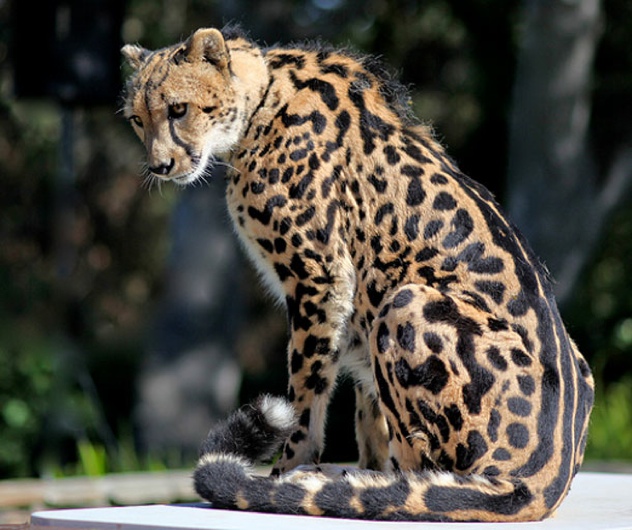
The cheetah is the fastest land animal on Earth, sprinting 70 to 75 miles per hour for over 500 yards at a time. They are not particularly dangerous to humans, since they see humans as a predator, not prey, and keep their distance. But their extraordinary speed comes at the cost of spending ten full minutes catching their breath after they stop. If they make a kill, they are unable to eat it until they have rested. During that time, lions, African wild dogs, or usually hyenas frequently arrive and steal the kill. The cheetah cannot fight back in its exhausted condition.
Because of this and also because the cheetah is not particularly big and has difficulty defending its cubs from lions and hyenas, it has not flourished as well as other famous African predators. Poaching does not help its cause, of course, and its pelt is highly prized, especially that of the rare King Cheetah pattern. There are about 12,400 cheetahs in the wild today.
In a fair fight versus a human, the cheetah would win without any trouble, weighing up to 160 pounds and far more agile, but they are very shy animals, and there are zero reported cases of cheetah attacks against humans in the wild. Unfortunately, their shyness adds a different kind of challenge to hunting them, and many hunters are eager to take one at a cheaper license price of $1,750, compared to the license for one of the African Big Five.
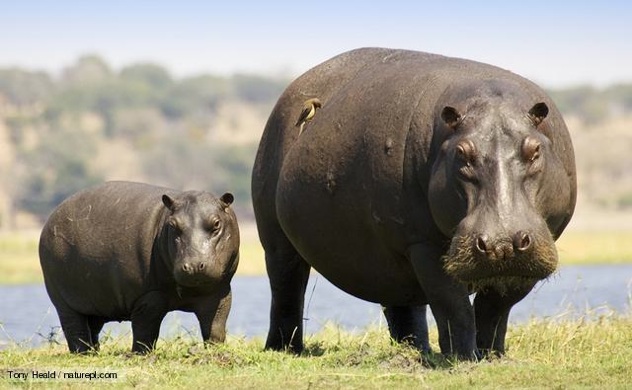
Hippos may look hilariously ungainly, like giant, cute pigs, but they are, in truth, terribly short-tempered, with 20-inch, ivory canine fangs and jaw hinges set so far back that they can open their mouths to 170 degrees when yawning or attacking. They are possibly the most intemperate, aggressive animals in Africa, rivaled only by the Cape Buffalo and the one and only Honey Badger. The hippo’s skin is 6 inches thick, with little fat beneath, and it can run 20 miles per hour for 50 yards, readily outpacing most humans.
Not a single hippo has ever been made accustomed to the presence of humans, to the degree that it would allow a human to walk around it. They do not eat meat, but attack any predator without provocation, even Nile crocodiles while both are underwater. Some professional hunters have stated that they will not try their luck with the hippo. There are about 125,000 to 150,000 left in the wild, and they are poached for trophies and especially their ivory teeth. Nevertheless, some of the nations which host them in the wild have licensed hunters for the fee of $2,500, excluding travel and guides. The teeth may be kept as trophies, but the ivory trade is internationally banned. Drug dealing billionaire Pablo Escobar once owned 4 of them, and when his estate was liquidated, the hippos proved too dangerous even to approach, and were left to roam wild. They bred to a total of 16, one of which was later shot in self-defense. The rest are still in the Magdalena River.
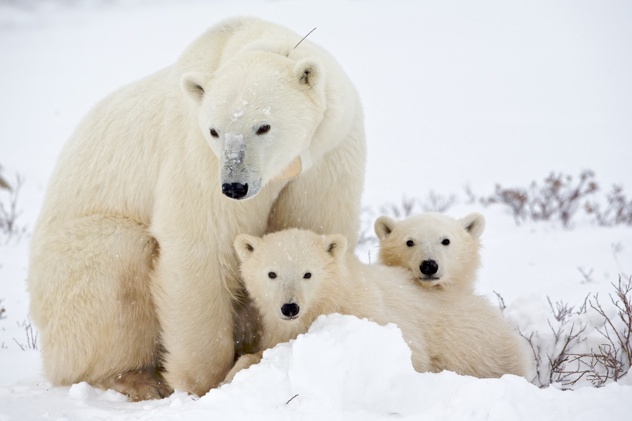
The most aggressive and dangerous bear in the world is also the largest terrestrial predator. The second largest is the Siberian tiger, which is less than half the bear’s size. It weighs between 770 and 1,500 pounds, standing up to 5 feet at the shoulders, and averaging 6 to 8 feet long. The longest on record was a male hunted and killed at Kotzebue Sound, Alaska, which weighed 2,210 pounds and was mounted on its hind legs at 11 feet tall. Polar bears’ paws are 12 inches wide, and they have been known to charge humans without provocation from more than 100 yards away. They consider humans a food source only when very hungry, but have the distinction of being the only predator on Earth that will actively watch the horizon for humans, remember high human traffic areas and stake them out to stalk, kill, and consume humans. They tolerate human presence far less than most wild animals. They are stealth hunters and make almost no noise at all when walking on ice, pouncing on most victims from behind.
They have been the center of debate among the five nations which claim land in the Arctic: USA, Russia, Norway, Denmark, and Canada, and they were the only subject of peaceful, diplomatic debate between the U. S. and the Soviet Union during the Cold War. Both nations agreed to cooperate on the bear’s conservation. Today, there are about 20,000 to 25,000 polar bears left in the wild, and they are absolutely illegal to hunt in Norway, but the other four nations permit the indigenous Arctic peoples to hunt them for subsistence, as they have done for centuries.
America also permits sport hunting of polar bears, but with severe restrictions on game lands, and a license price of $35,000. An interesting note: any Arctic traveler who ventures into polar bear territory is required to have a firearm with him or her for self-defense at all times.
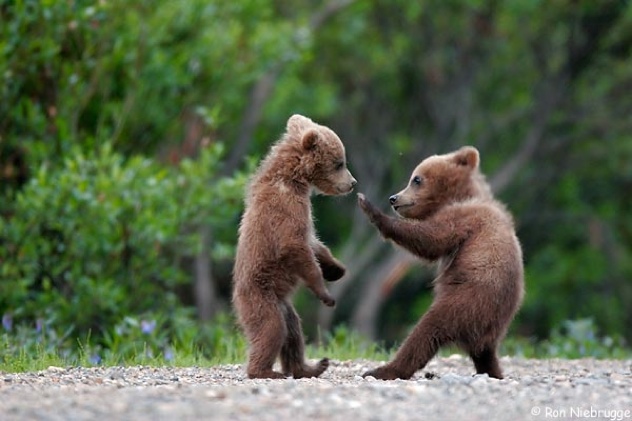
The classic dangerous game animal of North America, the one that features in most of the exciting stories, the grizzly bear is a subspecies of the brown bear. The Kodiak bear is an even less numerous subspecies, numbering 3,526 in 2005. But it is not endangered because more Kodiak bears reach adulthood per year than die. The grizzly’s size varies dramatically depending on the availability of food. Whereas the Kodiak ties with #5 for largest bear in the world, grizzlies, now and then, approach this size. Most of the males reach 6 and a half feet long, 3 and a half feet high at the shoulders, and between 400 and 800 pounds. They can reach 1,500 pounds and run 41 miles per hour for 50 yards.
In America, they are present in Yellowstone Valley, northwest Montana, and Alaska, but most hunters take specimens in Canada where they are much smaller. There are conservation efforts to preserve the subspecies, but they currently number 71,000 in the wild and are decreasing due almost entirely to hunting. Though they are more aggressive than black bears, 70% of all fatal grizzly attacks on humans have been the result of surprising a mother with cubs. Survivors have suffered skull bites that squeezed their eyes out of the sockets. In the United States and Canada, grizzlies do not fall under the standard big game licensure, and killing one costs $1,155 as of 2011.
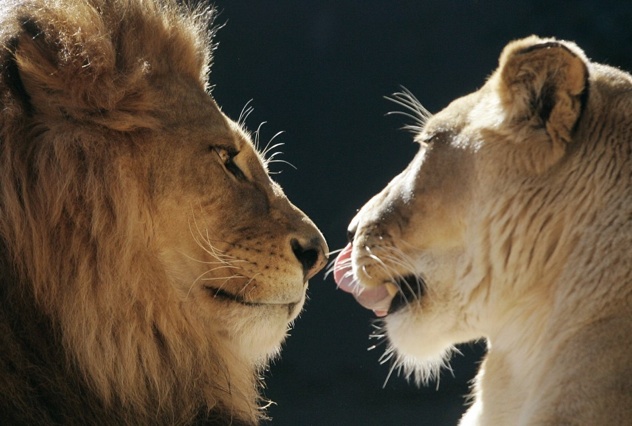
Lions are classified as “vulnerable,” which is one degree better than endangered. In the last 20 years, they have declined by 30 to 50%, most of this due to industrial encroachment. There are about 15,000 of them left in the African wild. Lions, in general, will vacate an area when humans introduce a lot of machinery and activity, because this scares away all their typical prey. They do not prey on humans unless they have painful dental problems or septic wounds. They are remarkably one of the smaller species on this list, but they are among the very finest killers in the animal world.
Males weigh up to 600 pounds and run 45 miles per hour in short bursts. These bursts can last up to 150 yards, and one swing of a paw can cut a hyena or person in half. Because they are so majestic in appearance, they are very popular trophies. A professionally guided hunt will cost anywhere from $18,000 to $45,000, including the $5,000 license. But unlike the next entry, old males are not the only fair game that can be taken. A male or female, in its prime, may be hunted legally in Kenya, Tanzania, and South Africa, and a few other countries. The game preserves on which these hunts take place are typically privately owned, fenced farms of at least 20,000 acres.
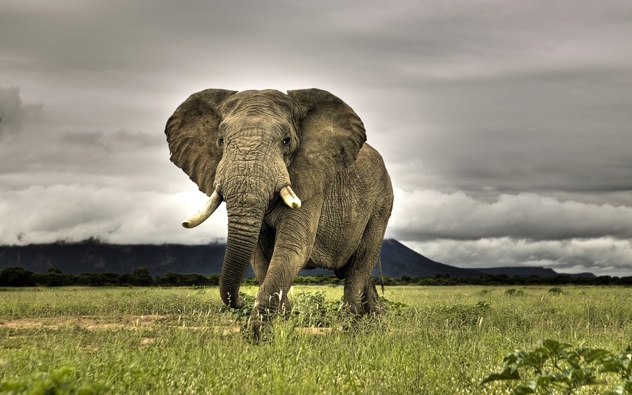
Elephants are, frankly, very easy to kill if you’re a human. Elephants are routinely cited as having no natural predators. Humans are unnatural predators. We know our limitations and arrive armed with “elephant guns.” But then, whitetail deer are very difficult to hunt, because they have extremely good hearing and a sense of smell. The wild turkey is possibly the most difficult animal to hunt in North America. Most animals see humans and immediately hide, for good reason. Elephants do not, because they’re accustomed to being the biggest animals in the area. Not that they could hide well if they tried, but when they see a safari jeep, they stand and watch. If it comes too close, they may walk away, or they may charge. The rest is a matter of being able to score a headshot on a target the size of a small car engine.
We know they’re terribly endangered, but their total number still stands at between 450,000 and 700,000 today. In 1900, there were 10 million. Most of them were killed by legal trophy hunting before African nations began protecting them in the mid-20th Century. Today, most of those killed are the result of illegal poaching. Though ivory is internationally banned, it is still popular among the wealthy, especially in Asia, and poachers make $5,000 per pair of tusks, besides the feet, which are hollowed out into wastebaskets.
But elephants are frequently hunted within the law in South Africa, Kenya, and Tanzania. These nations charge at least $50,000 for a license to kill a single old bull or cow. The animal must be old, or sick, or a rogue animal that poses a threat to humans. Rogues are usually killed by the game wardens of the wildlife preserves. If the animal is no longer able to mate and serves no use in its herd. The hunter is then guided in a jeep to the animal and the guide backs him up in case he misses. Efforts must be made to isolate the specimen from the herd, since attacking one elephant will likely induce a charge from others who witness it.
In response to criticism from animal rights groups, defenders of these hunts maintain that they spare the animals the miserable death of starvation, or being brought down by #3, and that the exorbitant fees are spent on conservation of the species. This lister does not see much sport in the use of a gigantic rifle like the .700 Nitro Express, but there is sport in using a bow and arrow, which can succeed with a shot between the ribs.
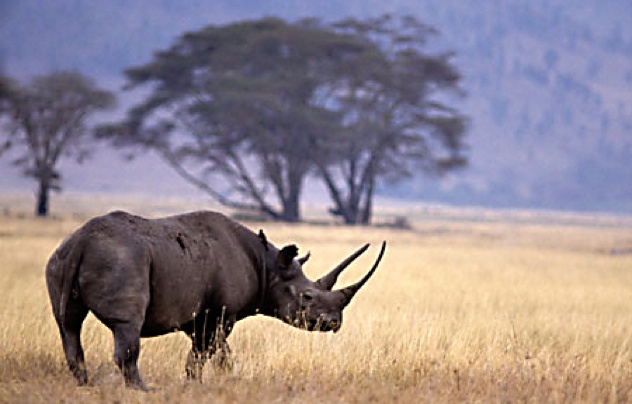
The rhino is still poached (illegal) for its horn, which is fashioned into a dagger hilt, or ground into powder and consumed for various pseudo-medical properties. There are, as of 2010, about 2,500 of them, across the subspecies, left in the wild, in Kenya, Tanzania, and around the southeastern coast nations of Africa, north to Angola. Poaching aside, South Africa has elected to sell some of the animals to professional hunts at very high prices. In 1996, a man named John Hume bought three of them for $200,000, then sold the hunting rights to two of them to two other men. They requested anonymity because of death threats, but they paid $150,000 each to hunt the animals. Hume hunted the third himself. He was one of the very first to pay money to a conservation society for the privilege of hunting a black rhino.
One of the anonymous hunters arrived in Africa after Hume and a professional tracker had trailed the rhino for 2 days. They drove the hunter to the area, and he got out and spent 2 hours on foot following the guide until they found the bull. It took two shots in the head before it went down.
The method for hunting black rhinos is much the same as for elephants. They do not hide very well, and do not understand to flee from a rifle. Instead, black rhinos are the second or third most dangerous game animal in Africa after the Cape Buffalo and Hippo, and they will charge without provocation. They have very bad eyesight and frequently gore termite mounds. If they are hunted legally, the hunter may keep any part of the animal as a trophy, including the horn. He may not sell any of these parts, since trade is internationally prohibited.
FlameHorse is a writer for Listverse. He has tried hunting a few times but is no good at it. He only hunts with a bow and intends to get better at deer hunting, but has no desire to kill any of the animals on this list.



